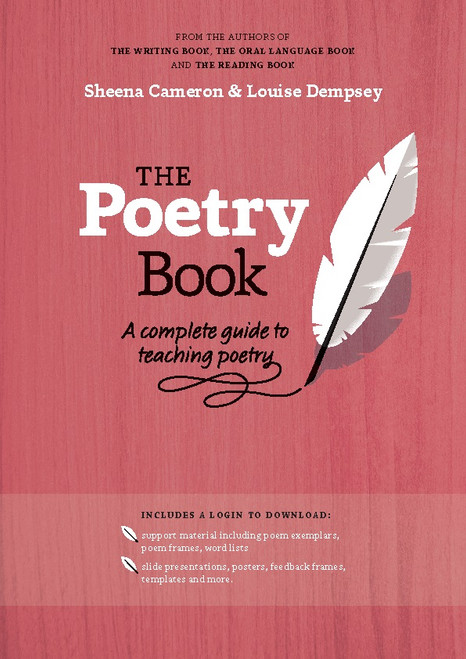The Poetry Book is a practical guide to teaching poetry.
There are over 100 resources available to download, including: poem exemplars, poem frames, word lists, templates, lesson slide shows and feedback frames.
Authors: Sheena Cameron and Louise Dempsey.
- Chapter 1: Introduction - guiding principles and practices
- Chapter 2: Planning for poetry
- Chapter 3: Teaching the skills for writing poetry
- Chapter 4: Poetry Quick Writes
- Chapter 5: Integrated poetry units
- Chapter 6: Sharing and celebrating poetry
The final chapter emphasises the importance of sharing and celebrating poetry. It presents ideas for different groupings for students to respond to each other's writing and includes a range of resources to support students to give effective feedback to each other, such as feedback frames and prompts. The last section of the chapter presents many engaging ideas for developing a love of poetry through performance, drama, art, publishing and music.
There are over 100 resources available to download, including: poem exemplars, poem frames, word lists, templates, lesson slide shows and feedback frames.
Authors: Sheena Cameron and Louise Dempsey.
- Chapter 1: Introduction - guiding principles and practices
- Chapter 2: Planning for poetry
- Chapter 3: Teaching the skills for writing poetry
- Chapter 4: Poetry Quick Writes
- Chapter 5: Integrated poetry units
- Chapter 6: Sharing and celebrating poetry
The final chapter emphasises the importance of sharing and celebrating poetry. It presents ideas for different groupings for students to respond to each other's writing and includes a range of resources to support students to give effective feedback to each other, such as feedback frames and prompts. The last section of the chapter presents many engaging ideas for developing a love of poetry through performance, drama, art, publishing and music.











